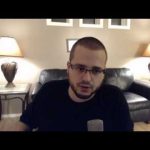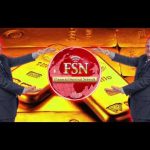JFK Assassination Witness: The Trial of Jack Ruby and the Conspiracy (2013)
Hugh Grant Aynesworth (born August 2, 1931) is an American journalist, investigative reporter, author, and teacher. Aynesworth has been reported to have witnessed the assassination of John F. Kennedy in Dealey Plaza, the capture and arrest of Lee Harvey Oswald at the Texas Theater, and the shooting of Lee Harvey Oswald by Jack Ruby in the basement of the Dallas Police Headquarters. In a 1976 Texas Monthly article, William Broyles, Jr. described Aynesworth as “one of the most respected authorities on the assassination of John F. Kennedy.”
According to Aynesworth, he was scheduled to interview a scientist at Southern Methodist University on November 22, 1963. He said that he saw Jack Ruby around 11:30 that morning in the employee’s cafeteria of the Dallas Morning News before Ruby went upstairs to place an advertisement for his nightclub. Aynesworth said he decided to take a long lunch hour and walk over to watch Kennedy’s motorcade from in front of the Dallas County Records Building. With the crowds two to three people deep on Main Street, he positioned himself in the middle of Elm Street on the corner of Elm and North Houston Street to obtain a clearer view.
Aynesworth described hearing a first shot as possibly backfire from a motorcycle, and recognizing a second and a third shot as coming from a rifle. He described the scene immediately afterwards as “total chaos.” Aynesworth reported that activity converged upon the Texas School Book Depository, and that he did not enter the building possibly for fear of running into a gunman. He said he started interviewing people and, as he was without paper, began taking notes on a “bunch of envelopes” he had in his pocket. According to Aynesworth, he interviewed people in the area and received information that turned out to be false or contradicted the statements of other witnesses. Aynesworth positioned himself near a three-wheeled police motorcycle in front of the Texas School Book Depository in order to listen to the voice traffic and find out what was happening. He stated that police radio transmissions, as well as the number of police entering the building, gave him the impression that a gunman was on the building’s roof.
Aynesworth described listening to the police radio and hearing what turned out to be the first report of the shooting of J. D. Tippit in the Oak Cliff section of Dallas by a citizen using the radio in Tippit’s police car.
He said he instructed another reporter to stay at the Texas School Book Depository and followed the police to the scene of the shooting in a WFAA mobile unit. He was with the police when they entered the Texas Theater searching for Oswald, and he saw Oswald’s attempt to shoot Office Nick McDonald. Two days later, Aynesworth was talked into going to the Dallas Police Headquarters by his wife and the saw Ruby lunge and shoot Oswald.
In the aftermath of the events in November 1963, Aynesworth became an investigative reporter who was reported to have “broken almost every major assassination story”.[2] He worked on the story for some time after Kennedy was shot and became the lead reporter for the Dallas Morning News regarding the assassination.[2][10] Aynesworth broke the story of Oswald’s escape route, and had the first major interview with Marina Oswald.[2] Having not told it to the Warren Commission, Marina had told him that she persuaded Oswald not to assassinate Richard Nixon.[2] Aynesworth, to the consternation of the Warren Commission, also obtained and published the Oswald diaries.[2]
Aynesworth has been reported to have spent much of his career attempting to refute John F. Kennedy assassination conspiracy theories.[9] He supports the official conclusion that Oswald acted alone and believes that conspiracy theories have been generated by people motivated by money and fame.
Leave A Reply
You must be logged in to post a comment.









 Paranormal
Paranormal

